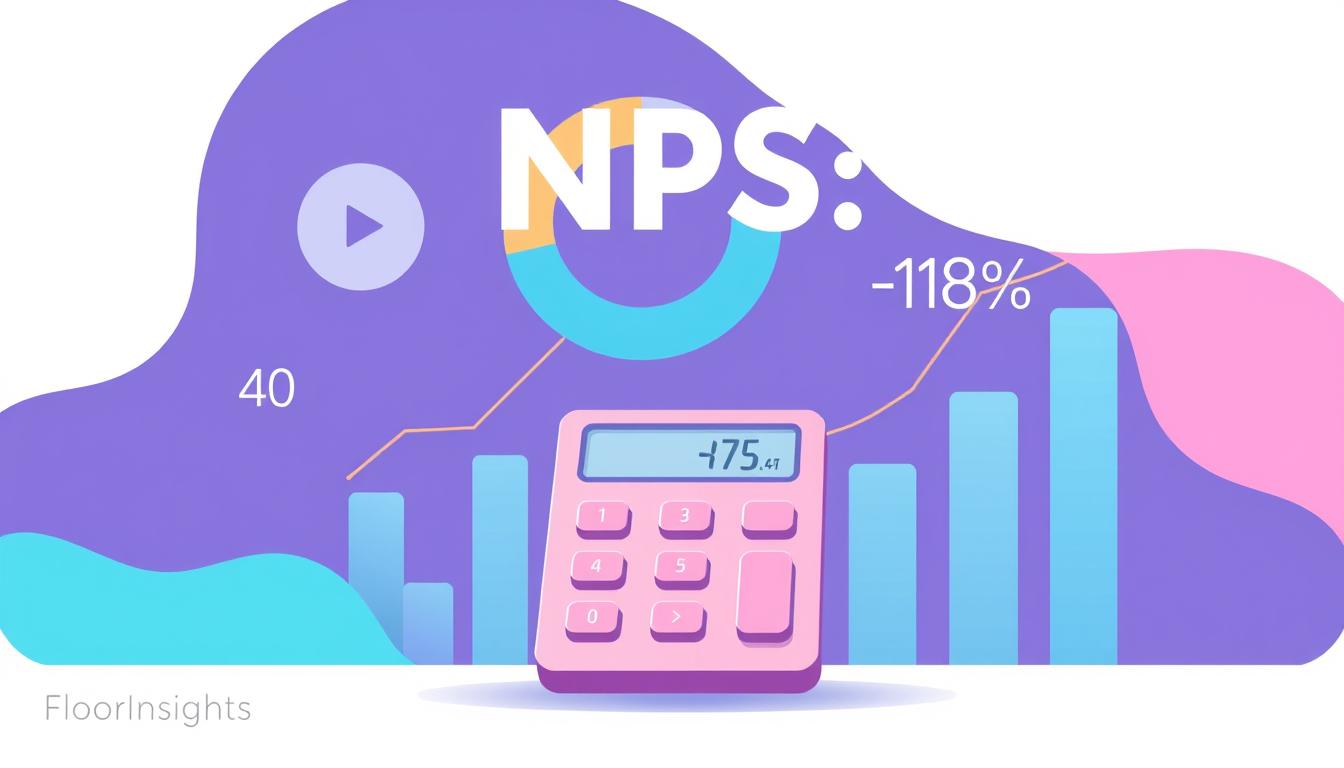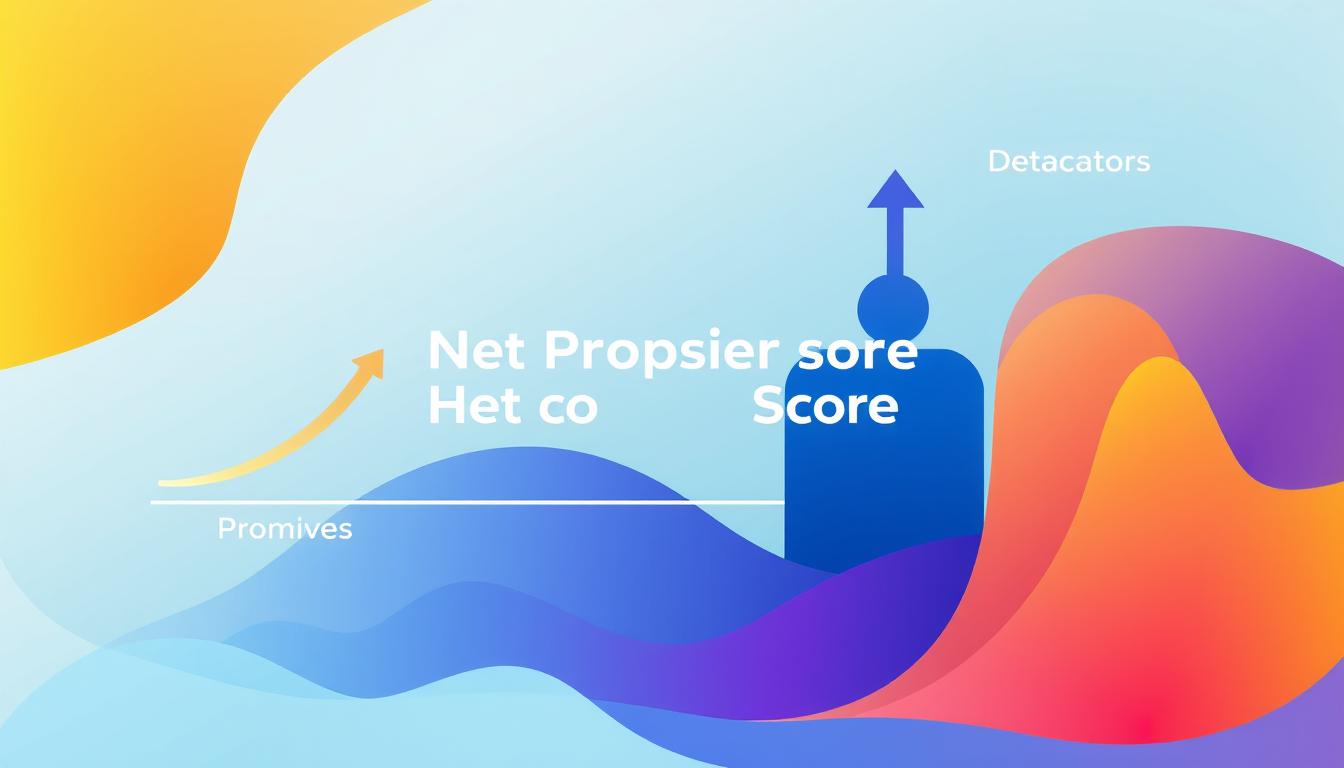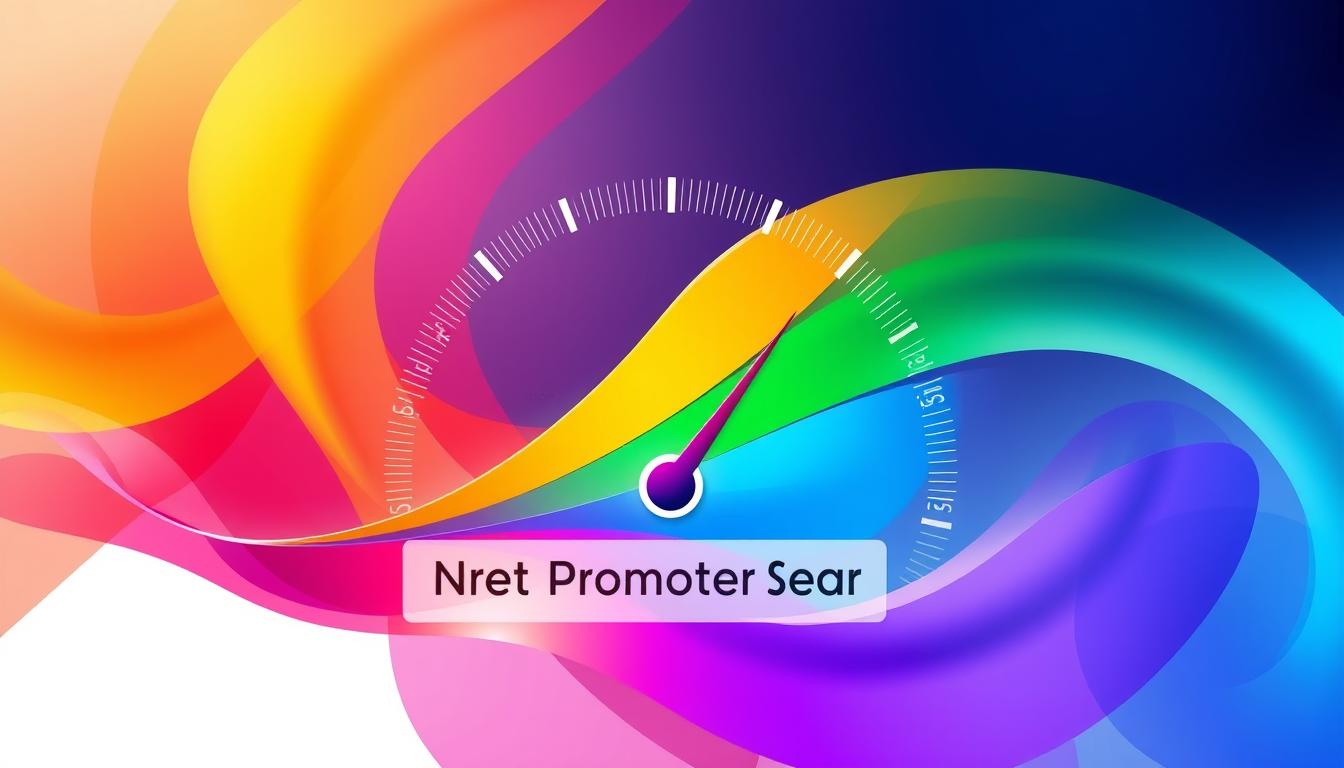In the rapidly evolving landscape of financial services in India, understanding the concept of Net Promoter Score (NPS) is imperative for fostering client satisfaction and driving innovation. NPS serves as a vital performance indicator that allows us to assess customer loyalty and satisfaction levels effectively. By prioritizing NPS in our strategies, we can harness valuable insights that not only enhance our services but also enable us to innovate and adapt to our clients’ ever-changing needs.
Key Takeaways
- NPS is crucial for understanding customer loyalty in financial services.
- Regular monitoring of NPS helps identify areas for innovation.
- Client satisfaction is directly linked to NPS outcomes.
- Implementing NPS aids in tailoring services to meet diverse client needs.
- Innovation driven by NPS can significantly enhance customer experience.
Understanding Net Promoter Score
Net Promoter Score (NPS) has become an essential metric for businesses aiming to understand customer loyalty. Using customer satisfaction surveys, this score provides valuable insights into how customers perceive a brand or service.
What is Net Promoter Score?
NPS is a metric derived from a simple yet powerful question: “On a scale from 0 to 10, how likely are you to recommend our company to a friend or colleague?” Based on the responses, customers are categorized into three groups:
- Promoters (scores of 9-10): Highly satisfied customers likely to promote the brand.
- Passives (scores of 7-8): Customers who are satisfied but vulnerable to competitive offerings.
- Detractors (scores of 0-6): Unhappy customers who may harm the brand’s reputation.
Importance of NPS in Business
The importance of NPS lies in its ability to reveal customer sentiment and guide strategic decisions. Companies can assess their performance relative to customer expectations, leading to enhancements in service delivery and customer experience. Through ongoing measurement via customer satisfaction surveys, businesses can:
- Identify trends in customer loyalty over time.
- Uncover specific areas requiring improvement or innovation.
- Create targeted strategies to convert detractors into promoters.
By actively monitoring the Net Promoter Score, organizations not only track performance but also foster a deeper connection with customers. This process ultimately drives growth and strengthens brand loyalty.
| Category | Score Range | Description |
|---|---|---|
| Promoters | 9-10 | Highly satisfied and likely to recommend |
| Passives | 7-8 | Satisfied but at risk of switching |
| Detractors | 0-6 | Unhappy customers who could harm the brand |
Role of NPS in Financial Services
NPS plays a critical role in shaping our approach to client engagement within financial services. By leveraging this metric, we gain a deeper understanding of customer sentiment and loyalty. This enhances our ability to respond to the needs of our clientele effectively.
Application of NPS in Financial Institutions
Financial institutions, including banks, insurance companies, and investment firms, utilize NPS to gauge client loyalty and overall satisfaction. By conducting regular client satisfaction surveys, these organizations gain insights into customer experiences and preferences. As a result, they can tailor their services to improve satisfaction levels significantly. For instance, a bank may analyze its NPS results to identify areas for improvement, ensuring it meets the evolving expectations of customers in a competitive landscape.
Benefits of Measuring NPS in Finance
Measuring NPS in finance offers several advantages. Firstly, it fosters improved customer loyalty, as clients feel heard and valued when their feedback is actively sought and acted upon. Additionally, NPS provides strategic insights that guide the development of enhanced service offerings, thus promoting innovation within financial institutions. By continuously measuring NPS and adapting to feedback, we create an environment that prioritizes client satisfaction and encourages long-lasting relationships.
Innovating Through Client Feedback
Understanding client feedback is essential for any company aiming to enhance its services. By leveraging customer satisfaction surveys, we can gather actionable insights into client needs and expectations. This method not only identifies areas for improvement but also fosters a deeper connection with clients, ultimately driving innovation.
Leveraging Customer Satisfaction Surveys
Customer satisfaction surveys serve as a cornerstone of effective client feedback systems. These surveys can be tailored to gauge the specific elements of products or services that matter most to our clients. By regularly employing these innovative feedback practices, we can adapt our offerings to better suit evolving demands. Analyzing the results allows us to discover trends and common themes, which will help refine our approach to meet client needs more accurately.
Creating Effective Customer Feedback Forms
Designing an impactful customer feedback form is critical in maximizing the quality of insights received. An effective form should ask relevant questions that encourage candid responses. Some key aspects to consider in our customer feedback form include:
- Clear and concise questions to avoid confusion
- A mix of open-ended and closed-ended questions for detailed input
- Incorporating scales and rating systems to quantify satisfaction
Utilizing these elements aids in collecting pertinent information that reveals client sentiment and sentiment trends, empowering us to make data-informed decisions conducive to innovation.
NPS as a Driver for Client Satisfaction
NPS serves as an essential driver of client satisfaction, influencing how organizations gauge their performance and understand customer feelings. We gain insights from various client satisfaction metrics that, in conjunction with NPS, help in painting a complete picture of customer sentiment. This section will clarify these metrics and present useful customer satisfaction templates that can streamline the process of measuring client contentment.
Understanding Client Satisfaction Metrics
Understanding client satisfaction metrics is crucial for any financial service provider aiming to enhance customer loyalty and retention. Some primary metrics include:
- Net Promoter Score (NPS): Measures the likelihood of customers recommending services to others.
- Customer Satisfaction Score (CSAT): Indicates how satisfied customers are with a particular interaction or service.
- Customer Effort Score (CES): Assesses how easy it is for customers to interact with the service.
- Churn Rate: Measures the percentage of customers who cease their relationship with the service.
Utilizing these client satisfaction metrics allows us to pinpoint areas for improvement and ensure that we align our services with customer needs. By monitoring these metrics continuously, we can stay ahead in enhancing overall satisfaction levels.
Using Customer Satisfaction Templates
To effectively track client satisfaction, implementing a structured customer satisfaction template is paramount. Here are key components to include in a useful customer satisfaction template:
| Template Component | Description |
|---|---|
| Survey Questions | Must include clear questions related to customer experience and satisfaction. |
| Rating Scale | Utilize a consistent rating scale for easy evaluation, such as 1-5 or 1-10. |
| Demographic Information | Collect relevant demographic information for contextual analysis. |
| Open-Ended Feedback | Allow space for detailed responses, letting clients share their thoughts freely. |
These customer satisfaction templates not only help in gathering precise data but also encourage constructive feedback. By refining our approach based on these insights, we foster a stronger relationship with our clients, ultimately enhancing the driver of client satisfaction.
Transforming Insights into Actions
Utilizing customer feedback is essential for fostering growth within the financial services sector. The insights gained from feedback analysis can guide us in implementing significant service improvements. By adopting effective strategies, we can transform raw feedback data into actionable initiatives that lead to enhanced customer experiences.
Turning Feedback into Service Improvements
To effectively convert client feedback into service improvements, we must first categorize and prioritize the insights we receive. Here are key steps to consider:
- Identify Common Themes: Regularly analyze the feedback to spot recurrent issues and trends that customers are experiencing.
- Engage Teams: Foster collaboration among various departments to brainstorm solutions that align with customer expectations.
- Set Measurable Goals: Establish specific, measurable objectives to monitor the effectiveness of the changes made.
Analyzing Feedback for Strategic Innovation
Feedback analysis serves as the backbone of strategic innovation within our organization. It helps us stay ahead of the competition by focusing on areas that require enhancement. The following table illustrates the relationship between feedback analysis and strategic steps we can implement:
| Feedback Insight | Strategic Action |
|---|---|
| Inconsistent customer service responses | Standardize training modules across teams |
| Long processing times for transactions | Invest in automation tools to streamline workflows |
| Dissatisfaction with online user experience | Revamp the digital interface based on user feedback |
Utilizing these insights not only aligns us with market demands but also enhances our ability to deliver outstanding financial services. By continuously transforming feedback into service improvements, we position ourselves for long-term success through strategic innovation.
Customer Experience in Retail Financial Services
In today’s competitive landscape, enhancing the customer experience is vital for success in retail financial services. Understanding what customers truly value allows us to tailor our offerings and improve overall satisfaction. We can achieve this by leveraging targeted retail customer survey questions that facilitate meaningful insights.
Retail Customer Survey Questions
To effectively gauge existing customer sentiment, we need to incorporate focused retail customer survey questions. These questions act as a roadmap for understanding client needs and preferences. Examples include:
- How satisfied are you with our services on a scale of 1 to 10?
- What features do you value most in our offerings?
- How likely are you to recommend our services to others?
- What improvements would enhance your customer experience?
Such questions help to capture valuable data that can guide our strategies in retail financial services and ultimately foster a more enriching client interaction.
Enhancing Client Interaction Through NPS
We can use insights from Net Promoter Score (NPS) to significantly enhance client interaction. By analyzing NPS feedback, we can identify areas where our service delivery may be lacking. This proactive approach allows us to take corrective measures swiftly, ensuring that our clients feel heard and valued. Increased engagement initiatives may include personalized communication strategies or loyalty programs that resonate with client expectations.

Integrating client feedback consistently allows us to shape an exceptional customer experience. By continuously refining our retail customer survey questions and enhancing our use of NPS, we can create a cycle of improvement that benefits both our services and client satisfaction.
Measuring Patient Satisfaction in Healthcare Finance
In the healthcare finance sector, measuring patient satisfaction is crucial for improving service quality. We recognize the significant role that patient feedback forms play in gathering insights about patient experiences. These forms serve as essential tools for healthcare providers to obtain honest responses, enabling them to understand patient needs and expectations better.
Importance of Patient Feedback Forms
Patient feedback forms act as a bridge between healthcare organizations and their patients. Utilizing these forms allows us to assess areas requiring improvement. By analyzing the data collected, we can identify trends and make informed decisions. Comprehensive patient feedback forms not only enhance patient satisfaction but also help streamline operational processes in healthcare finance. Such forms often ask questions related to:
- Overall satisfaction with the financial process
- Clarity of billing statements
- Responsiveness of staff to queries
- Ease of navigating insurance processes
Examples of Effective Patient Satisfaction Surveys
Implementing well-structured patient satisfaction survey examples allows for the collection of meaningful data. Here are a few effective approaches we can adopt:
- Online Surveys: Easily accessible and often result in higher response rates.
- Telephone Interviews: Provide an opportunity for more detailed feedback.
- Paper Surveys: Useful in settings where digital access is limited.
- Focus Groups: Facilitate in-depth discussions about patient experiences.
Each of these methods enables us to gather valuable insights, ensuring we continuously enhance our offerings in the healthcare finance landscape.
Implementing a Net Promoter Score Survey Template
Setting up an effective NPS survey template tailored for financial services can significantly reinforce our understanding of client sentiments. By implementing thoughtfully crafted surveys, we gather valuable insights that directly inform our strategies. This section explores how to create tailored NPS surveys specifically designed for our audience, alongside best practices for conducting these surveys to enhance their effectiveness.
Creating Tailored NPS Surveys for Financial Services
To build an effective NPS survey template, we must consider the distinctive characteristics and preferences of our financial services clients. Tailored NPS surveys allow us to connect more deeply with our customers. Here are essential aspects to integrate:
- Demographic Relevance: Ensure questions relate directly to segments within financial services.
- Personalized Communication: Use language that resonates with our target audience.
- Specific Queries: Focus on service aspects critical to clients, such as trust and transparency.
Best Practices for Conducting NPS Surveys
Implementing our NPS survey template effectively involves adhering to best practices for NPS surveys. These tactics help maximize response rates and the quality of feedback:
- Timing: Distribute surveys shortly after customer interactions to capture immediate sentiments.
- Clarity: Frame questions clearly and concisely to avoid misunderstanding.
- Anonymity: Offer respondents the option to remain anonymous, which can yield more honest responses.
- Follow-Up: Engage with clients after survey completion to discuss their feedback, demonstrating our commitment to improvement.
| Survey Element | Importance | Example |
|---|---|---|
| Target Audience | Ensures relevance | Retail clients vs. corporate clients |
| Question Design | Influences answer quality | Rating service speed vs. product variety |
| Response Time | Affects engagement | 1-2 minutes recommended |
| Incentives | Boosts participation | Discounts on future services |
By focusing on creating tailored NPS surveys and implementing best practices for NPS surveys, we can position ourselves to capture genuine client feedback, fostering a culture of continuous improvement within our financial services.
Benefits of Regular NPS Evaluations
In the financial services sector, engaging in regular NPS evaluations provides significant advantages that contribute to the overall success of our institutions. By committing to ongoing assessments, we foster a culture of continuous improvement that not only enhances our services but also helps us build stronger ties with our clients. Understanding these benefits is essential for any financial institution looking to thrive in a competitive landscape.
Continuous Improvement in Services
Regular NPS evaluations serve as a foundation for continuous improvement within our organization. By systematically analyzing client feedback, we can identify areas that require enhancement. This approach leads to the implementation of targeted strategies, ensuring that our services remain competitive and aligned with client expectations. Key benefits include:
- Identification of service gaps through direct feedback.
- Opportunity for innovation based on client suggestions.
- Establishing a proactive rather than reactive service approach.
Strengthening Client Relationships through Feedback
Consistent feedback plays a crucial role in strengthening client relationships. When we regularly conduct NPS evaluations, it demonstrates to our clients that their opinions matter. This engagement not only fosters loyalty but also allows us to build more personalized services that respond directly to client needs. The advantages are evident:
- Increased client trust and satisfaction.
- Greater retention rates as clients feel valued.
- Enhanced communication leading to long-lasting partnerships.
By harnessing the insights gained from regular NPS evaluations, we position ourselves to better meet client demands and improve our overall service delivery. This cycle of feedback and improvement is fundamental to staying relevant and competitive in today’s dynamic financial landscape.
| Benefits | Description |
|---|---|
| Identification of Improvements | Understanding areas needing changes based on feedback. |
| Innovation Opportunities | Developing new services driven by customer insights. |
| Client Retention | Keeping clients satisfied and reducing churn. |
| Stronger Trust | Building deeper, more meaningful relationships with clients. |
| Informed Decision-Making | Using data to guide strategic decisions and investments. |
Real-World Examples of NPS in Financial Services
We can gain valuable insights by examining real-world examples of how various institutions within the Indian financial sector successfully leverage NPS-driven innovations. These examples not only highlight the practicality of NPS but also showcase its ability to transform customer feedback into actionable strategies. Through detailed case studies, we will see how these organizations enhance their services by actively incorporating customer insights.
Case Studies of NPS-Driven Innovations
Several prominent institutions in the Indian financial sector have adopted NPS to foster innovation. For instance, HDFC Bank implemented a comprehensive feedback system that utilizes NPS to identify areas for improvement in customer service. This proactive approach allowed them to tailor products and services closely aligned with client needs.
Success Stories from the Indian Financial Sector
Success stories abound in the Indian financial sector. Kotak Mahindra Bank effectively used NPS feedback to streamline its digital banking services. The bank focused on consumer expectations and encountered significant success in improving user experience. Similarly, ICICI Bank adopted NPS to enhance engagement in its loan approval process, increasing customer satisfaction drastically.
Strategies for Enhancing NPS Outcomes
Organizations striving for excellence in customer relations must focus on effective strategies for enhancing NPS outcomes. By addressing both customer engagement and the overall experience, we can create an environment that promotes loyalty and satisfaction. Furthermore, implementing technology to track NPS can provide invaluable insights that inform our future actions.
Improving Customer Engagement and Experience
To truly enhance NPS outcomes, we need to refine our customer engagement strategies. This involves:
- Regularly conducting customer feedback surveys to gauge satisfaction levels.
- Personalizing interactions based on customer preferences and past behaviors.
- Implementing proactive communication, ensuring customers feel valued and heard.
By elevating the customer’s experience, we not only increase satisfaction but also positively impact our NPS scores.
Utilizing Technology to Track NPS Metrics
Leverage technology to track NPS effectively. Various software tools and applications can help us assess customer sentiments and identify trends over time. Key aspects include:
- Automated surveys that gather data seamlessly after customer interactions.
- Real-time analytics dashboards that present NPS scores and insights in an accessible format.
- Integration with CRM systems to track improvements in customer satisfaction over time.
Employing technology to track NPS metrics allows us to make timely interventions and refine our customer engagement strategies accordingly.
Conclusion
As we reflect on the insights shared throughout this article, we recognize the profound impact that Net Promoter Score (NPS) can have on financial services innovation. By actively measuring and analyzing customer feedback, we position ourselves to drive meaningful improvements that enhance client satisfaction. The summary of NPS benefits highlights not only the effectiveness of this tool as a metric but also its role in transforming organizations into customer-centric entities.
The importance of NPS in our industry cannot be overstated. It serves as a critical compass guiding our decision-making processes, ultimately shaping the way we interact with our clients. Embracing NPS allows us to continuously adapt to evolving consumer expectations, ensuring that we remain competitive in a dynamic market.
In conclusion, by adopting the NPS methodology, we empower ourselves to leverage client insights as catalysts for growth. As we commit to integrating NPS into our strategic framework, we pave the way for sustainable financial services innovation, leading to stronger and more fulfilling client relationships. Let us take this journey together, redefining excellence in customer experience through the lens of NPS.
FAQ
What is the Net Promoter Score (NPS)?
The Net Promoter Score (NPS) is a customer loyalty metric that gauges how likely customers are to recommend a company’s products or services to others. It is obtained through customer satisfaction surveys that typically ask respondents to rate their likelihood of recommending the brand on a scale from 0 to 10.
Why is NPS important for financial services?
How can we leverage customer satisfaction surveys to drive innovation?
By analyzing insights gathered from customer satisfaction surveys, we can better understand client needs and expectations. This feedback helps us make informed decisions, leading to innovative solutions and improved customer experiences.
What are the key benefits of measuring NPS in financial institutions?
Measuring NPS in financial institutions helps us gain insights into customer loyalty, identify service strengths and weaknesses, and foster strategic improvements. It leads to enhanced client relations and tailored service offerings that meet evolving demands.
What should be included in a customer feedback form?
An effective customer feedback form should include clear questions regarding client experiences, satisfaction levels, and specific suggestions for improvement. It is essential to utilize customer satisfaction survey templates that resonate with our clientele.
How can we transform customer feedback into actionable improvements?
To transform feedback into service improvements, we need to analyze client insights thoroughly and prioritize key areas for enhancement. Then, implementing changes based on this analysis will help improve service offerings and align them with customer expectations.
What are some effective patient satisfaction survey examples?
Effective patient satisfaction surveys often include questions about the quality of care received, interactions with medical staff, and the efficiency of services. Using patient feedback forms tailored to the healthcare finance context can provide valuable insights into patient experiences and areas for improvement.
How do we create tailored NPS surveys for our clients?
To create tailored NPS surveys, we should focus on specific questions that align with our services and client demographics. By crafting relevant and engaging survey questions, we can collect insightful feedback that accurately reflects our clients’ sentiments.
What are best practices for conducting NPS surveys?
Best practices for conducting NPS surveys include ensuring survey anonymity, timing the surveys strategically post-interaction, and implementing user-friendly formats. Additionally, regularly reviewing results and acting on feedback is crucial to maintaining client satisfaction.
Related Posts
- How Enterprises Use NPS to Foster a Customer-Centric Culture – NPS for Enterprise Businesses
- The Rise of Predictive NPS Analytics – Future Trends in NPS
- NPS as a Key Driver for Continuous Journey Improvements – NPS and Customer Journey
- How NPS Can Help Identify Key Moments of Truth – NPS and Customer Journey






